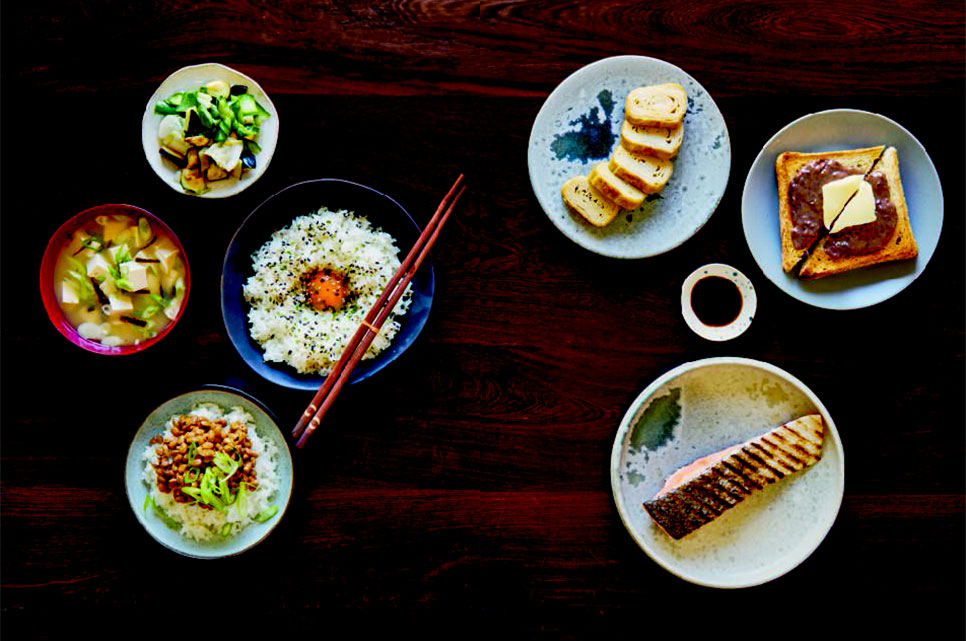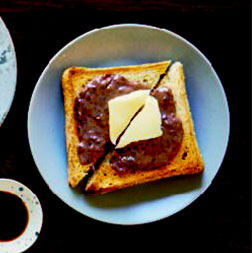
Breakfast in Japan
Japanese author Harumi Kurihara says her mother taught her the importance of making the first meal of the day
From a nutritional point-of-view, some say breakfast is the most important part of the day. However, the renowned Japanese cookbook author Harumi Kurihara also argues that cooking this meal also marked the beginning of a lifelong passion for cooking.
“My mother was a great cook,” writes Kurihara in her guest essay for Breakfast: The Cookbook, “I was brought up to believe that it is natural to help with the cooking. Whenever she cooked, she would let me taste the dish, then asked, ‘How do you like it?’ Even when I was little, I gave her my comments and suggestions: ‘Why don’t you add a little salt and soy sauce?’ Looking back, this may have been the starting point of my career in cooking.
That starting point did veer a little bit off course, Kurihara admits. “Everything was in the Japanese style at home, with Japanese-style meals and the atmosphere of a Japanese-style house. I admired Western-style living, so when I got married, I was excited to have Western-style furniture, chairs in particular, and to cook Western-style meals such as scrambled eggs and coffee for breakfast, which I’d never had before,” writes Kurihar. “ But I have not continued to cook Western-style meals, simply because I didn’t want to force myself to cook unfamiliar dishes. I started thinking about cooking more Japanese meals. I grew up watching my mother wake up early every morning to cook breakfast for my family. She taught me a great lesson: that it is very important to cook and eat breakfast. Today, that lesson is still in effect. My favorite among my mother’s breakfast dishes is a menu of freshly cooked rice, sesame miso soup, dried horse mackerel (caught and prepared in my hometown), natto [fermented soy beans] with chopped spring onion and fish flakes, and homemade pickles in bran.
“My mother never used instant stock in the broth of miso soup. First, she’d carefully make dashi with kelp and fish flakes. Then she roasted the sesame seeds slowly until they got sticky enough. She warmed the dashi and added miso paste. She’d poured this mixture into the pan and mix it with the sesame seeds, adding tofu she broke up with her hands. ‘Heat it, but do not boil it,’ she instructed. Each year we celebrate the arrival of spring by putting a few Japan peppers into our sesame miso soup. The taste is beyond description, full-flavored, fragrant, wonderful—one I’ll never forget.”

Recreating that particular unforgettable taste takes time, though there are a few quicker Japanese dishes that you could fit into your morning routine. Take toast with red bean paste, for example. All you need a 1/2 cup (130 g)of canned, drained adzuki beans; 4 tablespoons sugar; a pinch of salt; 2 slices of thick white bread; and 1 tablespoon (15 g) of butter.
In a small saucepan, combine the adzuki beans, 3/4 cup (175 ml/6 fl oz) of water, plus the sugar, and salt. Bring to a boil over medium heat, then reduce the heat to a simmer until slightly thickened and reduced by half. Blend in a blender or with a hand blender to make a paste. Then spread the bean paste on the toast and top with a pat of butter. That’s a taste from the Land of the Rising Sun, no matter where you got up this morning.

For more exciting ways to shake-up your morning routine, order a copy of Breakfast: The Cookbook here.